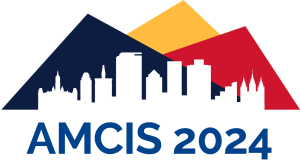Abstract
There is wide agreement that healthy democracies demand flourishing independent media. However, the media, shaping our views by creating a meta-narrative of how we see the world, are "disproportionally in the hand of a few, often the very rich" (Stiglitz, 2024), which typically reduces balanced, multi-partisan coverage. This underpins the potential of strong public media offering substantial 'democracy-relevant journalism' – easily and freely accessible via the Internet. To this end, various stakeholders in Europe including public and private broadcasters, the European Broadcasting Union, device manufacturers, software providers, and research institutions, have developed the new broadcast distribution standard 'Digital Video Broadcasting - Internet' (DVB-I). It offers viewers a customizable list of linear and non-linear channels on a device-independent 'TV' screen and deploys 'in the back' the most suitable distribution infrastructure – satellite, cable, terrestrial, or over-the-top (OTT) – for the chosen channel (see dvb-i.tv). Starting the multi-stakeholder innovation process in 2019, the German pilot won the 2023 Innovation Award at the International Broadcasting Convention. However, stakeholders still need to solve technical and antitrust challenges as well as diffusion and business issues, before the vertical information systems standard (Markus et al., 2006) and the media community platform (Markus & Loebbecke, 2013) can lift public and private players onto the next level. - Cost/Benefit: Public broadcasters live on the public's interest in a strong democracy which provides them with some resources and incentives for co-developing and diffusing DVB-I. Private broadcasters need to balance (1) the likelihood that DVB-I-will become a competitive necessity, (2) cannibalization concerns with regard to other distribution infrastructures, and (3) manageable development costs. - Channel Listing: To make DVB-I the window to the broadcast and streaming world requires all major channels and streaming services joining the endeavor, even if not everyone can be at the top of the list. (The European Union's Audiovisual Media Directive fosters prominence of public value channels.) - Oxymoron of Standardizing Success: While early investors need sufficient lead-time to reap their economic benefits, only wide and fast adoption and diffusion can uplift DVB-I from a technical solution to a de facto industry standard. Along these three concerns, we frame our accompanying IS research. Recurring to the theories of collective action (Olsen, 1965) and the governance of business alliances (Gulati & Singh, 1998), we work on designing the DVB-I platform governance structures and diffusion processes with the overriding goal to exploit the Internet for securing democracy-relevant journalism and thus healthy democracies. References Gulati, R., and Singh, H. 1998. "The Architecture of Cooperation: Managing Coordination Costs and Appropriation Concerns in Strategy Alliances," Administrative Science Quarterly (43:4), pp. 781-814. Markus, L., Steinfield, C., and Wigand, R. 2006. "Industry-Wide Information Systems Standardization as Collective Action: The Case of the U.S. Residential Mortgage Industry," MISQ (30:SI), pp. 439-465. Markus, L., and Loebbecke, C. 2013. "Commoditized Digital Processes and Business Community Plat-forms: New Opportunities and Challenges for Digital Business Strategies," MISQ (37:2), pp. 649-653. Olsen, M. 1965. The Logic of Collective Action, Cambridge, MA: Harvard University Press. Stiglitz, J. 2024. The Road to Freedom: Economics and the Good Society, LSE Talk (2024-04-30), www.youtube.com/watch?v=NVhGkgb1dwc.
Paper Number
tpp1408
Recommended Citation
Loebbecke, Claudia; Kloeckner, Christian Paul; and Vignold, Jil, "Supporting Democracy via DVB-I as New Internet Standard for Media Distribution" (2024). AMCIS 2024 TREOs. 178.
https://aisel.aisnet.org/treos_amcis2024/178
When commenting on articles, please be friendly, welcoming, respectful and abide by the AIS eLibrary Discussion Thread Code of Conduct posted here.


